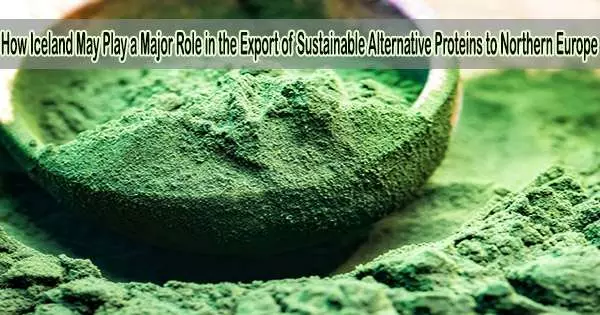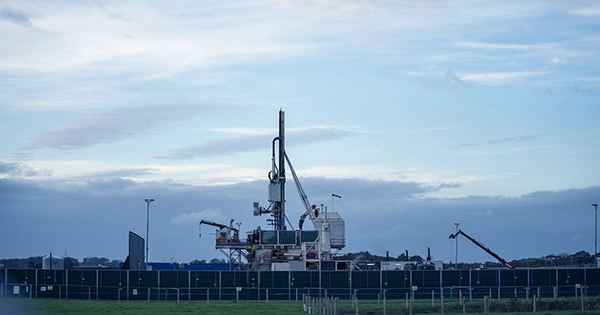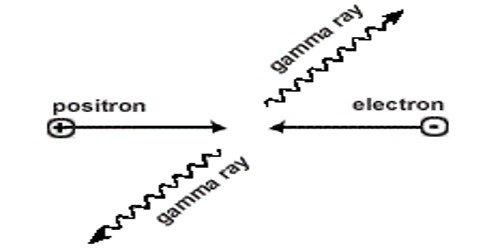With the expansion of its industrial Spirulina production, Iceland could assist in addressing the food security challenges in Northern Europe. Spirulina is a nutrient-dense, environmentally friendly, and risk-resistant alternative protein source. According to the most optimistic projections, Iceland might be self-sufficient in protein and able to feed more than six million Europeans annually.
The issue of sustainable protein self-sufficiency has moved up the political agenda due to the environmental consequences of humans continuing to rely on animal source foods for protein in their diets (such as eggs, milk, beef, pork, poultry, and fish), as well as Europe’s reliance on imports of crops high in protein to meet food demand.
As a replacement for traditional meat, ‘future foods’ like spirulina, a blue-green algae with numerous health benefits, have recently been suggested. They have the potential to significantly reduce environmental consequences, such as greenhouse gas (GHG) emissions and freshwater withdrawals, by more than 90%.
It has been reported that Spirulina contains a higher content of protein (up to 70% per 100g) than meat from beef cattle (up to 30% per 100g lean meat), with the average European consuming nearly 80kg of beef meat per year. While spirulina is now more expensive than beef, it is believed that if it is produced on a large scale, the cost will decrease.
In Iceland, Spirulina is already produced successfully in a novel, industrial-scale, biomass cultivation system powered by renewable energy. Currently in operation is the Hellisheidi Production Unit, operated by Vaxa Iceland, and situated in the Hellisheiði geothermal power plant. The production process is carbon neutral.
For the purpose of the feasibility study, Dr. Asaf Tzachor and Dr. Catherine Richards, from the Centre for the Study of Existential Risk (CSER) at the University of Cambridge, in collaboration with researchers from Denmark and Iceland, explored Iceland’s role in supporting Northern European countries to achieve protein self-sufficiency.
The protein self-sufficiency feasibility model developed by the researchers uses data from the Hellisheidi Production Unit as a benchmark. The model is developed to evaluate potential scenarios for increasing Iceland’s capacity to produce spirulina and export the edible biomass. Their findings are reported in the journal Foods.
On a protein-per-protein basis, for each kilogram of Spirulina (dry weight) consumed instead of meat from beef cattle, 315kg CO2 equivalent (CO2-eq) could be reduced. As a climate change mitigation option, and under the most ambitious scenario, this intervention alone may yield annual savings of 75.1 million tonnes CO2-eq or 7.3% of quarterly European greenhouse gas emissions.
Dr. Catherine Richards
The researchers evaluate potential production expansion based on the usage of now installed and potentially installed renewable energy capacity using six Spirulina production scale-up scenarios. The model consists of two main components: protein supply (including real-world Spirulina production data) and protein demand (accounting for adult daily protein intake requirements as well as the suitability of Spirulina biomass to satisfy these requirements).
According to the researchers, to ensure sufficient intake of all essential amino acids, men would need to consume 39.34kg of Spirulina biomass (in dry weight), and women would need to consume 33.72kg of Spirulina biomass, each year.
Iceland could generate 20,925 tonnes of spirulina annually utilizing 15% of the installed energy generation capacity under the first production scale-up scenario, assuming a conservative scale-up. This is enough to meet the protein and dietary requirements of 572,867 individuals.
In the sixth scenario, billed the ‘ultimate scale-up,’ Iceland could be self-sufficient and in a greater allocation of energy capacity used by heavy industry the country could additionally meet the needs of Lithuania and Latvia, or Lithuania and Estonia, plus Jersey, Isle of Man, Guernsey, and the Faroe Islands.
Under this most ambitious scenario using planned energy projects, Iceland could support itself plus Denmark (population of 6,104,474 in 2030), or Finland, or Norway, or Ireland with up to 242,366 tonnes of Spirulina biomass per year, satisfying 6,635,052 people.
“Europe’s reliance on third parties for the importation of protein-rich crop imports to meet domestic food demand, exposes such countries to protein supply change disruptions,” said Dr. Asaf Tzachor. “This renders European food security vulnerable, a situation which is only further exacerbated by the impacts of climate change on our global agricultural systems. This is why sustainable protein self-reliance is such a hot topic at the moment, with Spirulina identified as one such ‘future food’ recognised as a superb provider of complete protein with nutritional benefits including antioxidant and anti-inflammatory effects.”
The researchers also note the auxiliary environmental advantages of spirulina production, especially the decrease of GHG emissions, even though this was not the major focus of their feasibility study.
If Spirulina biomass was adopted in Western diets as a beef meat protein substitute (in the form of pills or pressed powder), it is anticipated that the average consumer could maintain a balanced diet while reducing GHG emissions linked to beef cattle agriculture and meat processing. This would take precedence over Northern Europe’s protein self-sufficiency.
“On a protein-per-protein basis, for each kilogram of Spirulina (dry weight) consumed instead of meat from beef cattle, 315kg CO2 equivalent (CO2-eq) could be reduced,” said Dr. Catherine Richards, who completed her PhD at the Department of Engineering, University of Cambridge. “As a climate change mitigation option, and under the most ambitious scenario, this intervention alone may yield annual savings of 75.1 million tonnes CO2-eq or 7.3% of quarterly European greenhouse gas emissions.”
Although the scaling-up scenarios taken into account in the feasibility study assume idealized production conditions, the researchers do note that these depend on the allotment of sufficient electricity for success.
When it comes to increasing Iceland’s spirulina production, there are also financial concerns to take into account. Additionally, more needs to be done to raise public knowledge of the advantages of spirulina use.
“Ultimately, there is a real opportunity here for Iceland to advance its biotechnology industry,” said Dr. Richards. “By relocating electricity currently consumed by heavy industry, Iceland could transition to a position as a major and sustainable alternative protein exporter.”
















